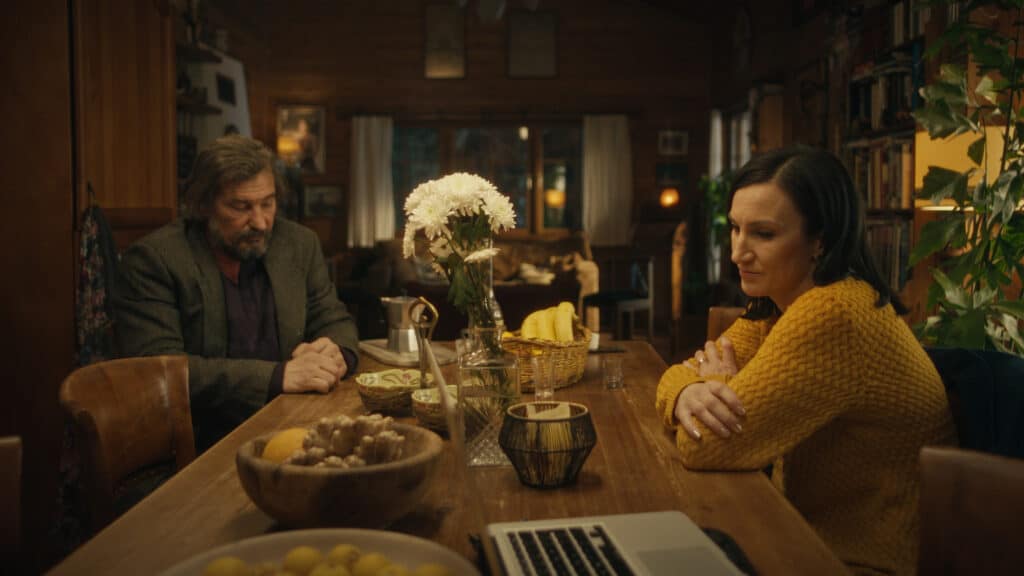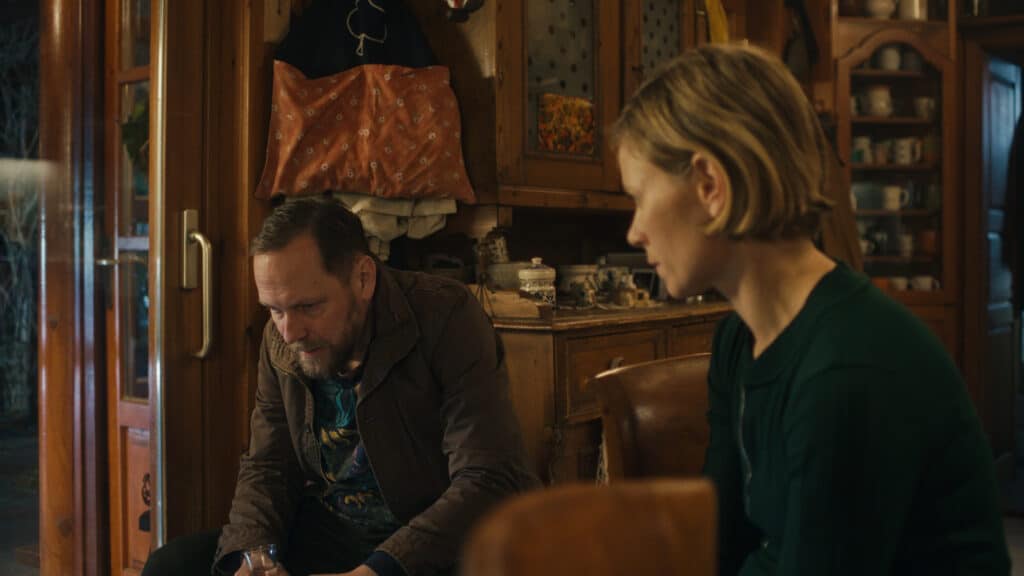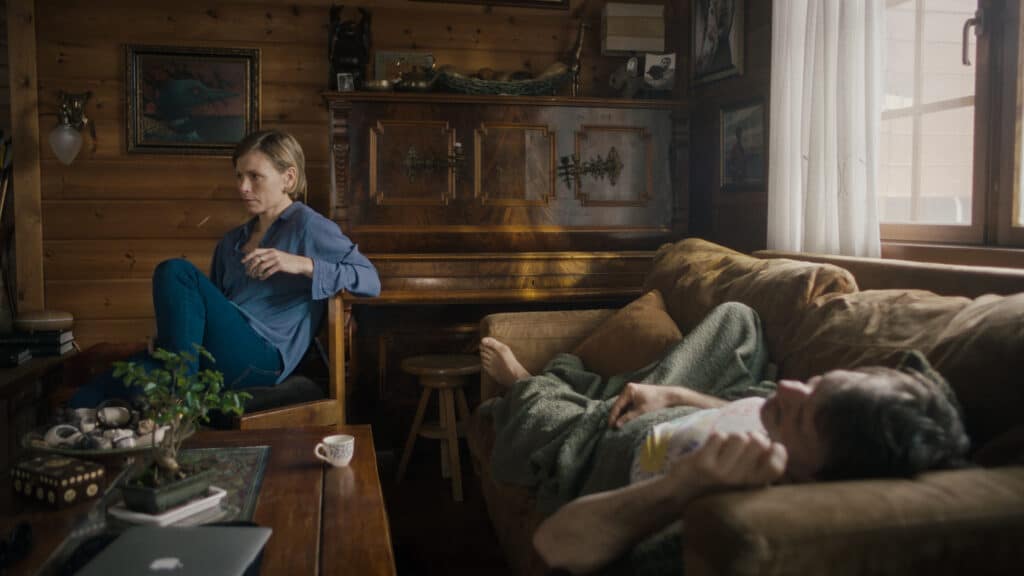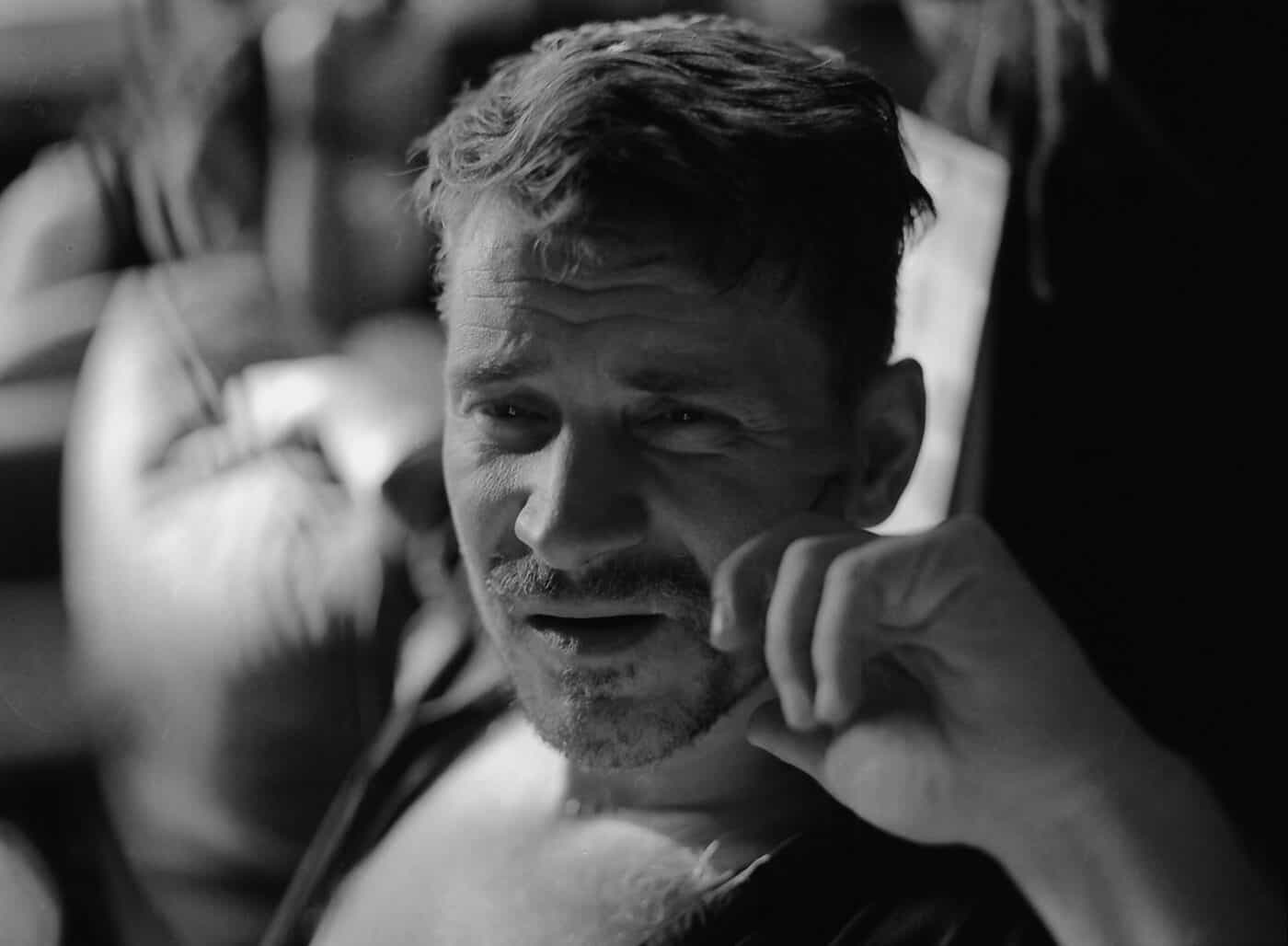Kálmán’s Day by Szabolcz Hajdu had its world premiere at the Black Nights Film Festival in Tallinn (reviewed here). I had the opportunity to talk to the director about the film.
The Disapproving Swede: This is the first film I’ve seen from you since It’s Not the Time of My Life in 2016. How did this project start?
Szabolcz Hajdu: I wrote that as a stage play in 2015, and it was performed in theatres. After a year, we decided to make a film of it. When it opened, we noticed that the audience was very excited about this topic. Nobody talked about the middle class and what happened with this generation.
TDS: Do you mean the audience in Hungary or internationally as well?
SH: In Hungary, but also when we went to Germany and other countries. It was a surprise to me that it was so universal. We decided to make another play, and I wrote Kálmán’s Day in 2017. We played it at least 150 times, not in big theatres but small places. It worked again, and the audience was very excited, and there were lots of conversations after the performances.
In 2019, I wrote the third part, so we had a trilogy. Then Covid came, and everything was delayed. Eventually, we shot both films last year. Kálmán’s Day, and the third part which is called One Percent Native American. I wanted to close this part of my life because it’s very personal.

TDS: So it’s not a coincidence that you play major roles in these two films. That didn’t happen that often in the earlier films.
SH: Everything that I do is personal. White Palms was very personal.1 White Palms (2006) is based on the director’s brother’s experiences. This one is more explicitly personal. Before each project, we always start with talking for two months, just talking about what happened to us. Regarding Kálmán’s Day, the most important topic was sexuality. Couples who lived together for 20 years, and then they don’t feel alive anymore. It’s very painful.
TDS: You are the sole writer credited for the screenplay, but you collaborated with the actors during the writing process.
SH: Yes, when I write a scene, I show it to the actors and ask what they think. The most important question is if it feels true or not, so in that way, they are always involved.
TDS: Is that before the theatre play or the film version? Or both?
SH: Actually, what you see and hear in the movie is the same as in the play. The actors are involved, bringing their own experiences and their friends’ experiences as well.
The interview with Szabolcs Hajdu goes cinematic
TDS: How did you approach the cinematography when you wanted to turn the space of theatre into cinema?
SH: It’s very difficult since they are two absolutely different languages. Cinema always hides something, for example, anything outside the frame. In the theatre, the audience can see everything, so actually, the audience edits the story in the theatre, but with cinema, I have to decide what to show to the audience, and not only in the editing room.

TDS: In the way you frame, for instance, since there are not so many cuts in the film.
SH: There is a practical reason because we didn’t have many shooting days. We had 12 shooting days altogether. We knew we wouldn’t have time to make a lot of shots and different angles because we would have to change the light all the time, so the solution was long takes…
TDS: With some movements. The camerawork is quite fluid.
SH: Yes, I didn’t want this Romanian style. The first idea was to make only three shots that would be quite long, but the location was quite small, and we couldn’t put a track that would be long enough there. Also, we only had a 3-meter slider, so we had to move it around constantly.
TDS: The film was shot by Csaba Bántó, who also shot Treasure City, which I haven’t seen yet.
SH: Treasure City is very nice, with beautiful cinematography. I think it’s a very good movie. Csaba was also one of 13 cinematographers on It’s Not the Time of My Life, They were all my students at the time. Going back to this film, the location was small, as I said. I liked it a lot, but it was quite uncomfortable. It was all quite organic, and it ended up being shots around five minutes. Some were shorter. I don’t know how many shots there are in the movie, maybe twenty.
TDS: When it comes to the actors, there is one new face, the one of Orsolya Tóth. The others you have worked with for some time.
When Orsolya Török-Illyés left the project, Oroslya Tóth came in, and everything changed. She has a very different personality, so the relationships with the other actors changed. She’s a great actress, she’s very sensitive. It was a great experience with her, she’s amazing. She’s a very experienced actress, but not in the sense that she does things routinely, but in a good way, a concentrated experience.

TDS: It’s a bit unusual role for her, no?
SH: Yeah, so it was good for her also because she never made this kind of role, so she was happy. When it comes to the men, they are my old friends from my hometown, Debrecen. We have been working together since 1986. When I moved from Debrecen to Budapest and went to film school, I called them to act in my short exam movies. From then on, we have worked together. We know each other like brothers. Nóra [Földeáki] comes from Debrecen too.
This is very important, but it may not be noticed by foreigners but the accent of Eastern Hungary is quite strong. It’s not only an accent, it’s actually different behaviour. Ernö and Zita speak with strong Debrecen accents.
TDS: In what way is the behaviour different?
SH: For instance, there is always something missing; you don’t say everything. Also, there is often a second meaning of what they really want to say. I know this since I’m from there, and I have this metaphorical layer as well.
TDS: Do you keep that way of talking when you move from there?
SH: Not in Budapest, but when I go back there, I start talking that way again.
TDS: Finally, I want to ask about the scene towards the end in the car. It’s quite different from the rest of the film. How did that idea come up? Because then it doesn’t feel like theatre at all.
SH: No, we felt we had to get out somehow from the house and have a scene without any dialogue. There is a lot of dialogue in the film. We wanted to leave the audience thinking and show the faces of the characters. It’s different from the play in that way. The end means the end of the relationships and actually the end of pretending, the end of love, and it’s very painful. In a way, not everything is explicit in the film.
TDS: Like the Debrecen accent?
Yes, it doesn’t say everything, but it is painful. The next film, One Percent Native American, will continue after these breakups.
TDS: With the same characters?
SH: Most of them, yes.
